#CelineInManchester
Explore tagged Tumblr posts
Text

.
Girl’s trip to Manchester.
It’s been a while since I went on a girl’s trip but when E. asked if I would like to accompany her to Manchester to visit her son and go to his gig I didn’t think for too long.
Let’s not wait this long for our next adventure E.
Manchester recap here
3 notes
·
View notes
Text
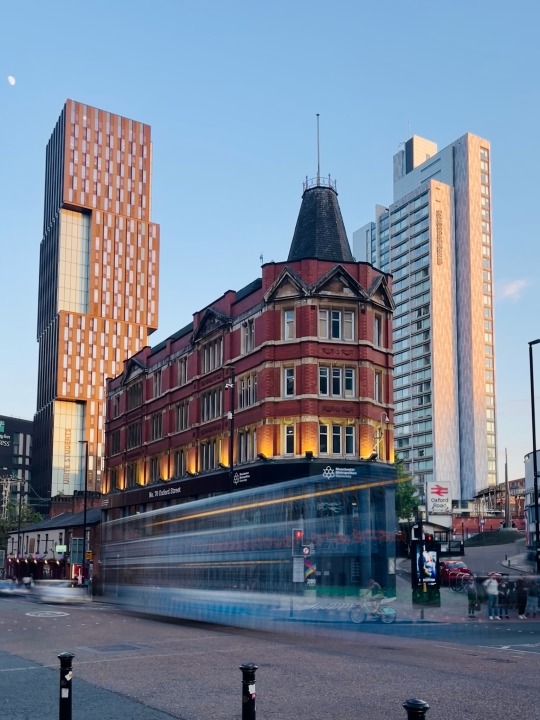
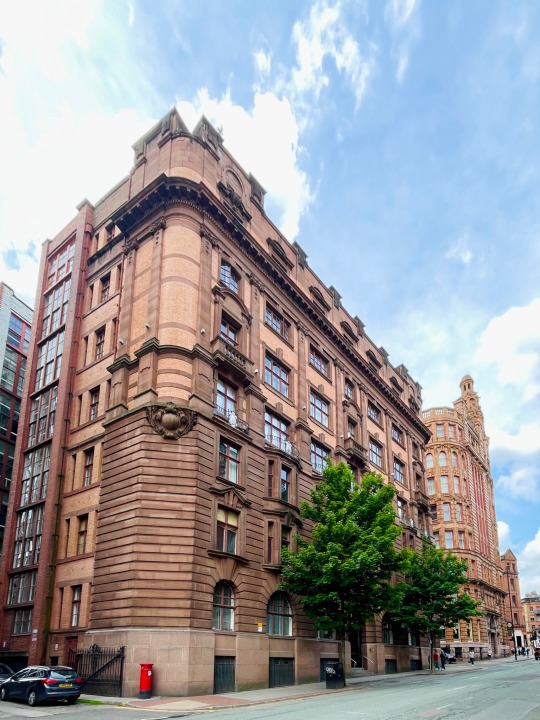

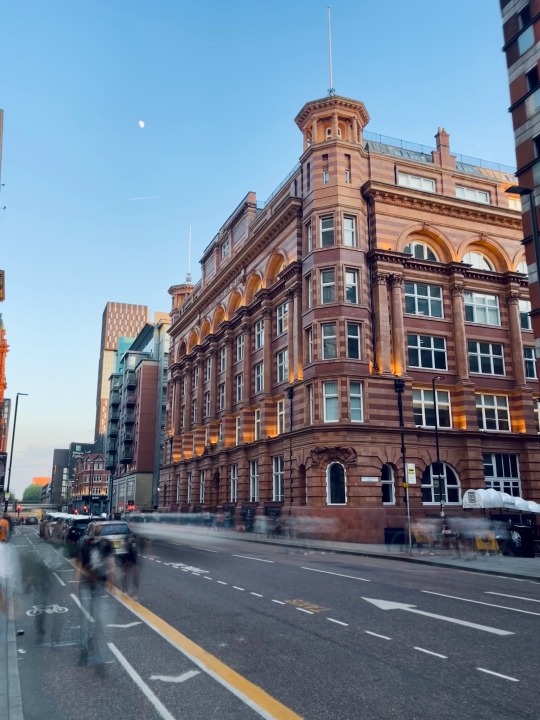
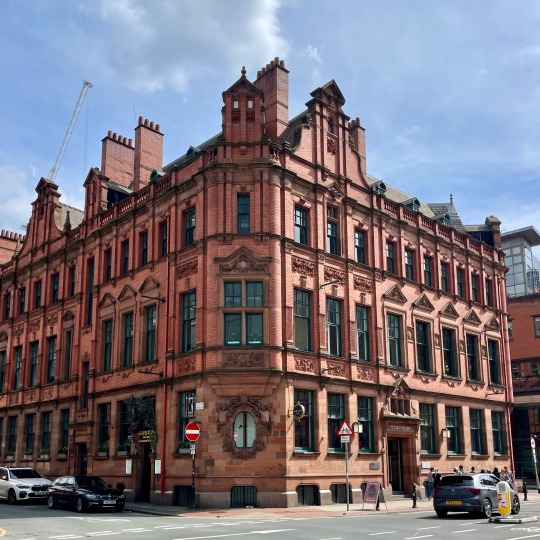
.
The rich architecture of Manchester.
The architecture of Manchester demonstrates a rich variety of architectural styles. The city is a product of the Industrial Revolution and is known as the first modern, industrial city. Manchester is noted for its warehouses, railway viaducts, cotton mills and canals – remnants of its past when the city produced and traded goods.
Manchester was granted city status in 1853 due to its rapid development and was the first to be granted such status since Bristol in 1542. Manchester was on a provisional list for UNESCO World Heritage site status emphasising the city's role in the Industrial Revolution and its extensive canal network.
2 notes
·
View notes
Text
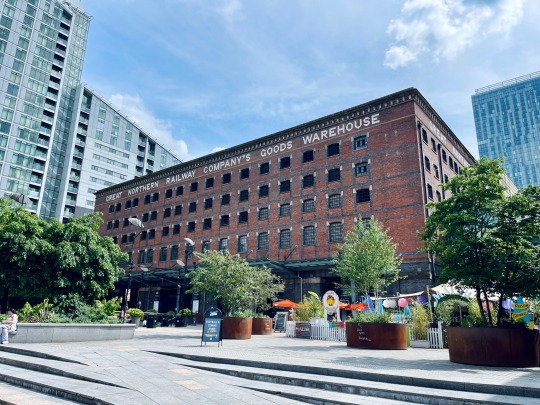

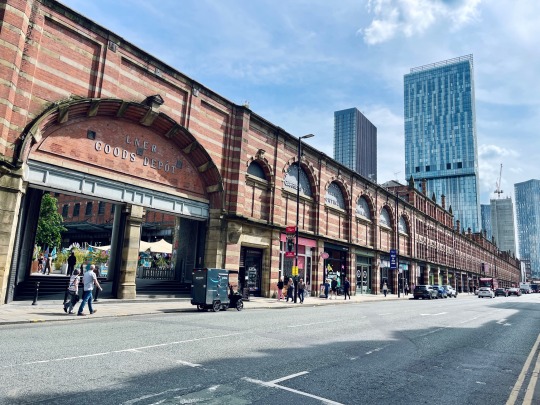
.
The Great Northern Warehouse is the former railway goods warehouse of the Great Northern Railway which was refurbished into a leisure complex in 1999.
The warehouse was built to be fireproof with a steel frame on a rectangular plan and five storeys high. It was built above the Manchester and Salford Junction Canal, and a dock was constructed beneath to allow goods to be transferred to and from canal barges via shafts and a complex system of haulage using hydraulic power.
The building could hold a total of 150 goods wagons across two of its levels, with capacity for a further 500 in its sidings. Its construction effectively wiped out the district of Alport Town, which had included 300 houses.
According to Historic England, the warehouse is a "unique survival of a three-way railway goods exchange station, serving the railway, canal and road networks of the Manchester region."
2 notes
·
View notes
Text

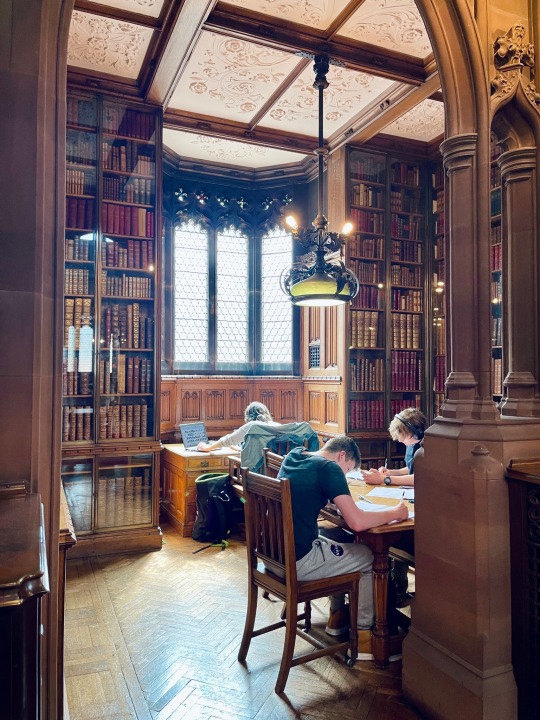



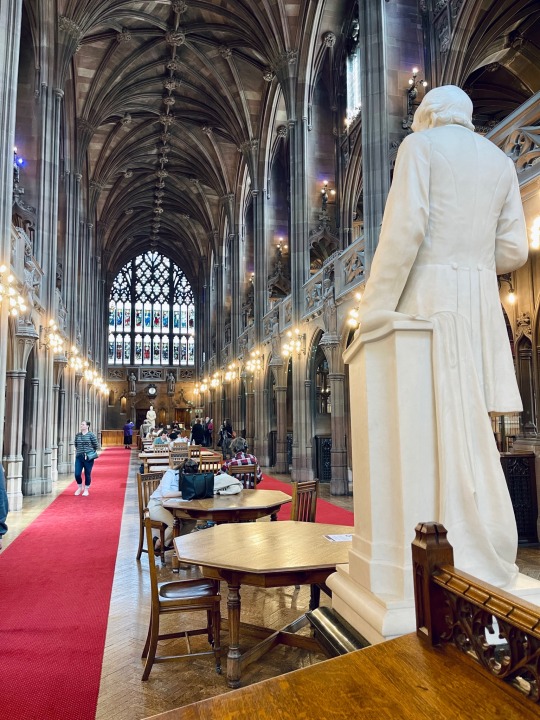
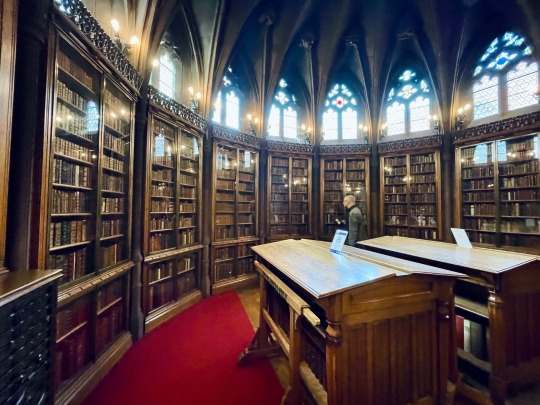


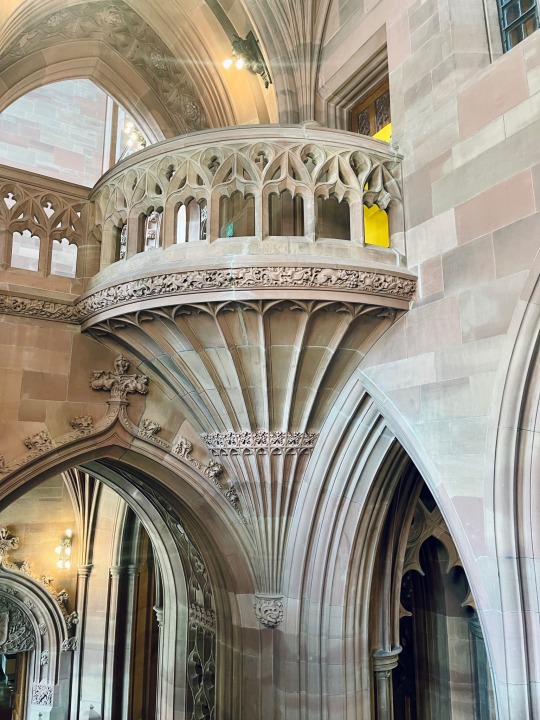
.
The gorgeous John Rylands Library.
NB founded by a woman but named after a man 🙄
The John Rylands Research Institute and Library is a late-Victorian neo-Gothic building. It is part of the University of Manchester. The library, which opened to the public in 1900, was founded by Enriqueta Augustina Rylands in memory of her husband, John Rylands. It became part of the university in 1972, and now houses the majority of the Special Collections of The University of Manchester Library, the third largest academic library in the United Kingdom.
The library, granted Grade I listed status in 1994, is maintained by the University of Manchester and open for library readers and visitors.
Enriqueta Rylands purchased a site on Deansgate for her memorial library in 1889 and commissioned a design from architect Basil Champneys. Mrs Rylands commissioned the Manchester academic Alice Cooke to index the vast library of the 2nd Earl Spencer which she had purchased and another collection of autographs. Mrs Rylands intended the library to be principally theological, and the building, which is a fine example of Victorian Gothic, has the appearance of a church, although the concept was of an Oxford college library on a larger scale
2 notes
·
View notes
Text

.
The Old Wellington…. Th e oldest building in Manchester.
Many of the buildings in the market place were demolished in the Victorian era to make way for road improvements and the rest were destroyed in the Manchester Blitz in 1940, leaving the Old Shambles as one of the few pre-19th century buildings, and The Wellington Inn as the only surviving Tudor building in Manchester city centre. The buildings were both designated as Grade II listed buildings in 1952.
And if you want to know a little more without having to search the internet here it is ;-)
The oldest building of its kind in Manchester, The Old Wellington Inn was built in 1552 next to the market square which led off what is now Market Street, in what was known as the Shambles. In 1554, part of it became a draper's shop, owned by the Byrom family, and the writer John Byrom was born there in 1692. The building had a third storey added to it in the 17th century. In 1830, the building became a licensed public house, known as The Vintners Arms, and later The Kenyon Vaults. By 1865, the ground floor of the building was known as The Wellington Inn, while the upper floors were used by makers of mathematical and optical instruments. Later, in 1897, the upper floors were used as a fishing tackle shop, known as "Ye Olde Fyshing Tackle Shoppe".
2 notes
·
View notes
Text
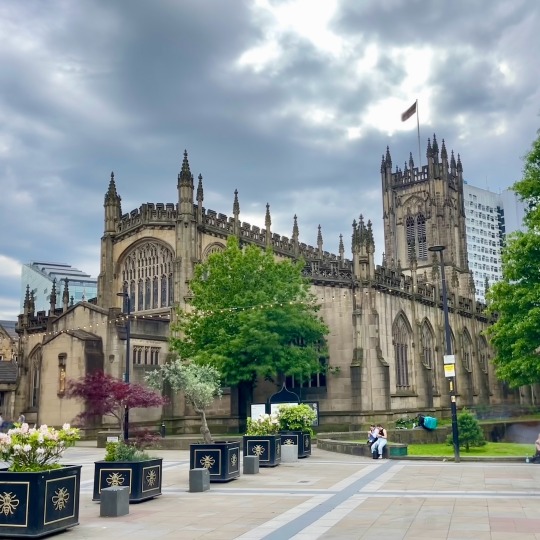
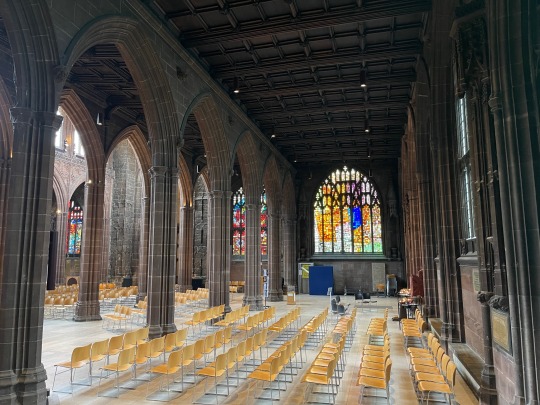



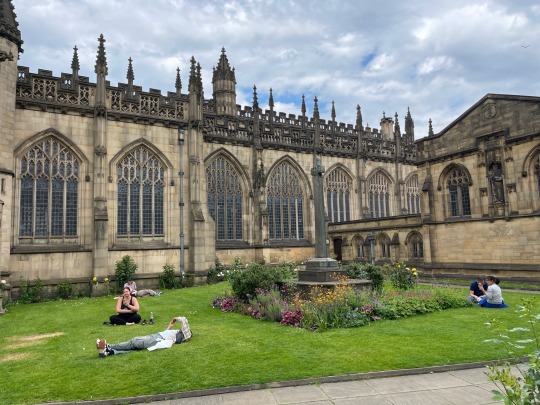
.
Manchester Cathedral.
2 notes
·
View notes
Text

.
Canal Street
Canal Street developed when the Rochdale Canal was constructed in 1804, a trade artery running through the city. Pubs and other businesses evolved to service the users of the canal, especially the people stopping at the lock nearby.
It wasn't until the 20th century when the area first begin to be properly associated with gay people. By the 1950s, use of the canal had greatly declined due to competition from other methods of transport. Whilst assuming the form of an industrial area full of cotton factories, by night the area was a red-light district. With the collapse of the cotton industry in Northern England, the area suffered urban decay. The area along the canal was perfect for gay men to meet clandestinely as it was dark and unvisited, but was near to good transport links such as Oxford Road and Piccadilly railway stations.
2 notes
·
View notes
Text

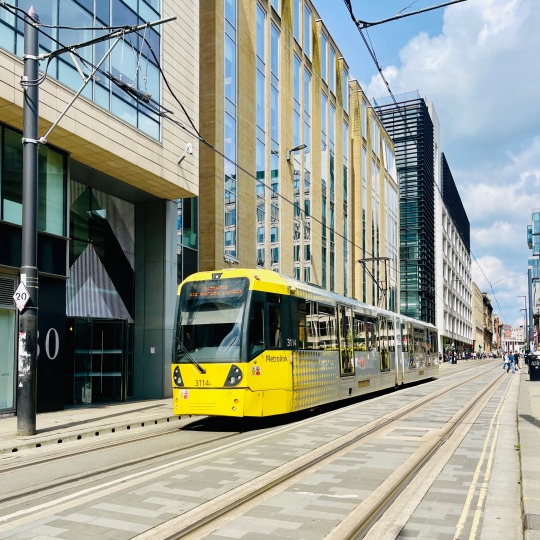
.
Since everything was within walking distance I didn’t get the chance to test public transport. 😉
2 notes
·
View notes
Text
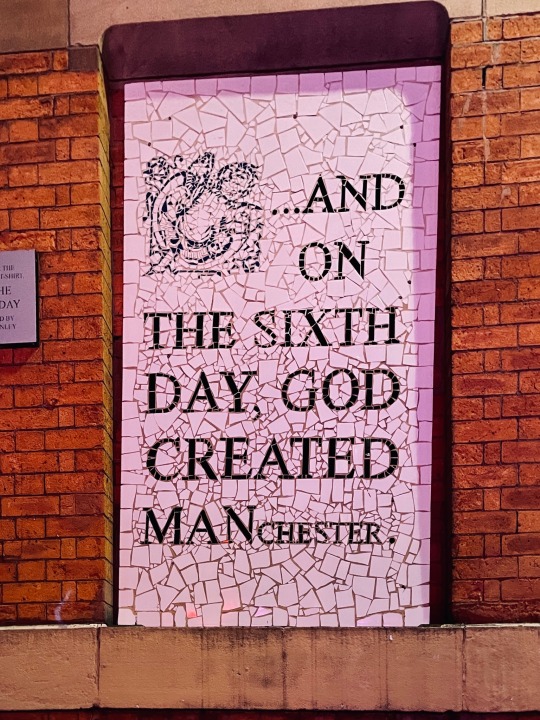
.
Made it to Manchester …
A slightly God complex.
2 notes
·
View notes
Text
.
A country with lots of rain means lots of green pastures.
The excitement just before landing and knowing you are off to new adventures.
2 notes
·
View notes